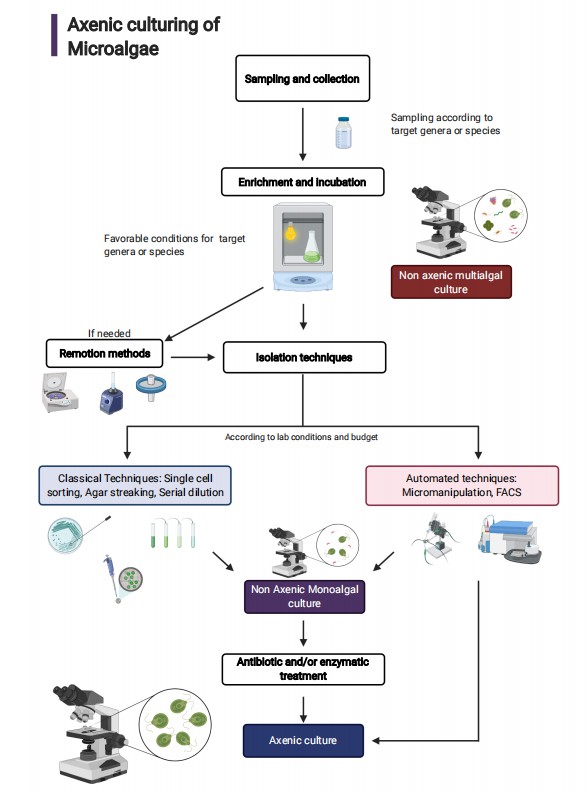Microalgae are of various types. Rapid growth and their simple structure make them fascinating organisms for biotechnological applications and are widely used in several fields. Therefore, the isolation and culture development of microalgae strains of interest is an essential step for laboratory research and successful commercial applications. Here at Lifeasible, we provide professional solutions for the isolation and purification of microalgae.
Microalgae are ubiquitous organisms on earth and the main producers of life on earth, with various applications in the fields of health care products, medicines, cosmetics, biofuel production, and bioremediation. Isolation and purification of microalgae from different environments for aseptic culture is critical for these applications, but it is noteasy. The bioprospecting of microalgae for a specific product or application is a multi-step process that includes environmental sampling, purification, and isolation of monocultures, determination of nutrient requirements and culture parameters, screening of microalgal species, measurement of growth, and development of suitable culture techniques. As a first step in studying microalgae, we need to select the appropriate microalgae isolation method.
 Fig 1. General processing steps for axenic microalgae culture obtention. (Fernandez-Valenzuela S, et al., 2021)
Fig 1. General processing steps for axenic microalgae culture obtention. (Fernandez-Valenzuela S, et al., 2021)
Depending on the habitat, the difficulty of culturing algal strains under laboratory conditions varies. Our scientists have developed sophisticated microalgae culture platforms to simulate the culture conditions of different microalgae in their natural habitats, providing strong support for microalgae isolation. Lifeasible has developed well-established procedures for sampling and isolating microalgae from natural habitats. We currently enable the isolation of microalgae from different environments such as ice, hot springs, freshwater, brackish water, rivers, oceans, dams, wastewater, rocks, saline bodies, coastal areas, and soil.
To obtain pure and uncontaminated microalgae species, we first adopt a series of pre-isolation procedures.
At Lifeasible, we can help you quickly isolate uncontaminated microalgae from various natural sources, with quality control of contamination at any step of the algal culture process. We are your trusted partner in all aspects of microalgae research. If you are interested in our solutions for the isolation and purification of microalgae, please do not hesitate to contact us.
Reference